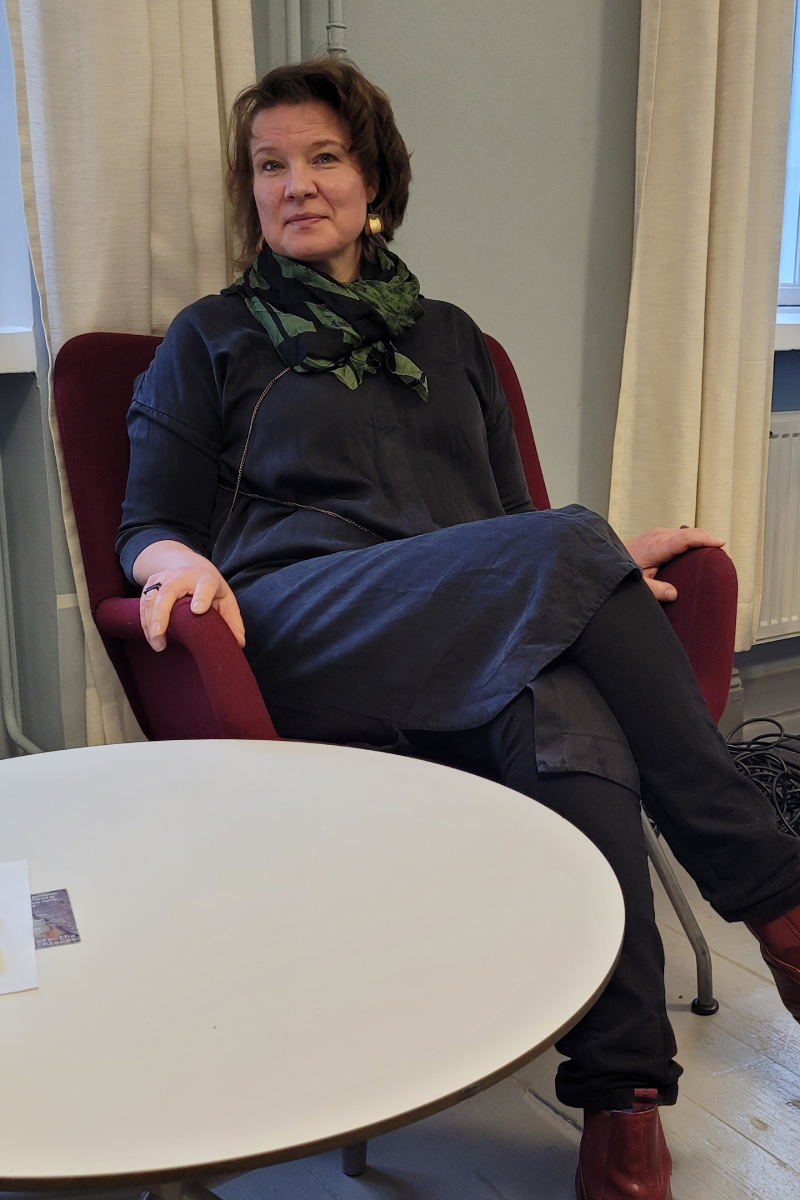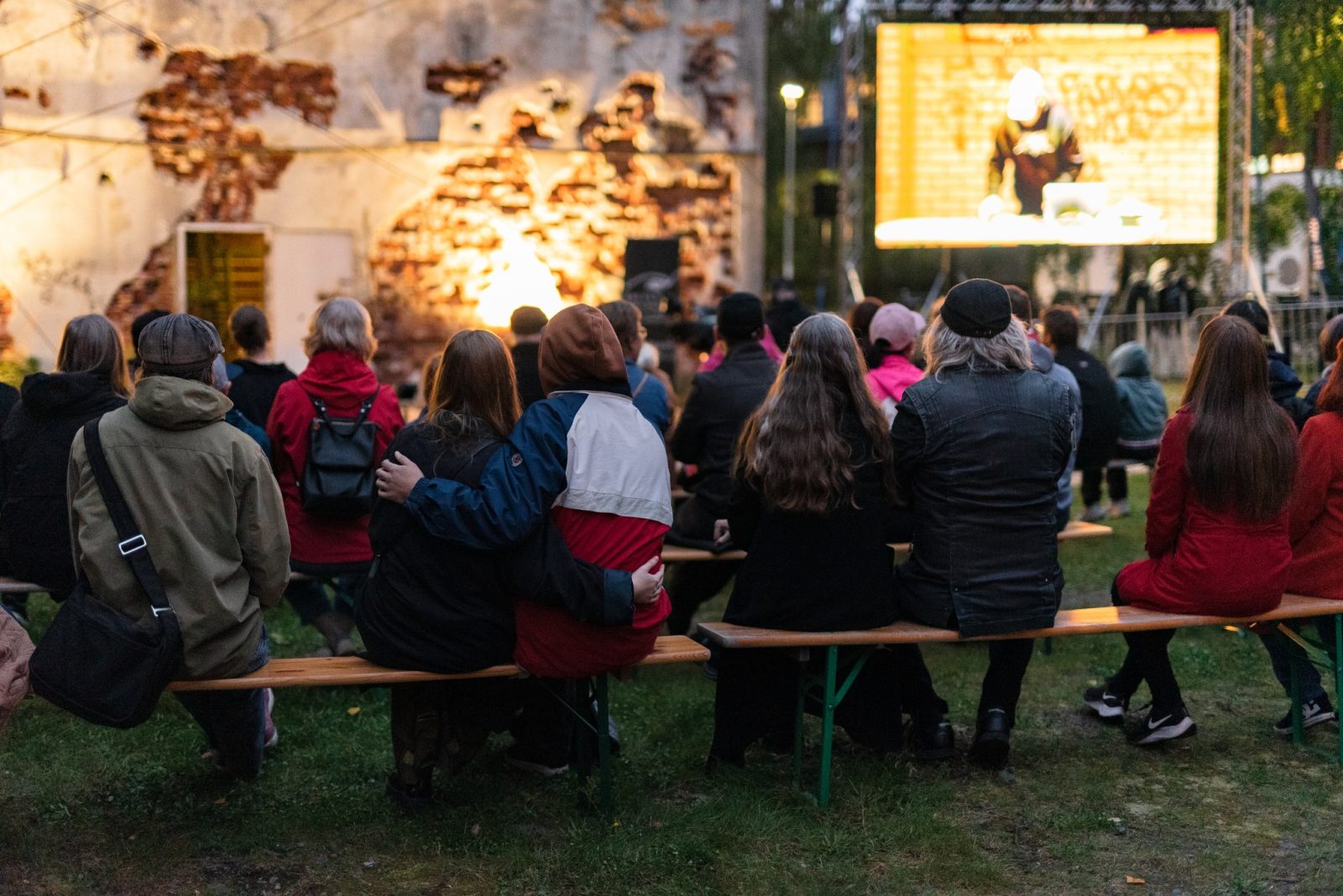A dome of music has been created over the audience, and next to me, a stranger is dancing. As they move to the same beat, they become my closest companion. When our eyes meet, we realise that we are sharing the same experience. For a moment, we are one: the music has bonded us together and made us rhythmic Siamese twins. Do you recognise this experience?
Artistic and cultural activities, such as attending concerts, are essentially linked to social interaction. Playing music or sharing a reading experience together deepens the artistic experience and the sense of togetherness. Culture and art are considered the social glue that binds people together.
How will Oulu2026, the European Capital of Culture, use art to mitigate climate change…
…or is it a question of cultural climate change, which aims to improve interaction between people both quantitatively and qualitatively? More social glue between people? ‘Cultural climate change means wanting to bring people together. It’s about bringing fun and joy into life, but also expanding our ways of thinking, understanding and listening to each other. It fuels creativity and new development,” says Piia Rantala-Korhonen, CEO of the Oulu 2026 Cultural Foundation, interpreting the theme for the European Capital of Culture.
In August 2026, Oulu hosted a session of the European Cultural Parliament (ECP) network. This network comprises influential individuals from the arts and culture sector who gathered to discuss European cooperation, democracy and culture. When presenting Oulu2026 as the European Capital of Culture, it became clear that visitors from around the world are primarily concerned about environmental and ecological issues in relation to cultural climate change. This is why it is important to highlight the environmental goals that the Capital of Culture Oulu2026 aims to promote. These goals are realised, for example, through environmental certificates, transportation options and energy choices.
The answer to the question posed in the headline is therefore akin to Uuno Turhapuro’s (a character from Finnish comedy films and one of the most well-known figures in Finnish cinema) response when asked whether he would prefer red or white wine. ‘Both, please!’
ArtistaR
Oulu is known for its history as a tar town. In the 19th century, some of the world’s largest fleets were impregnated with Finnish export tar from Oulu. In Oulu European Capital of Culture, tar has now been transformed into art. Artists and cultural operators from across the northern region are being promoted in Finland and around the world, and artists from outside the country are also coming to create art in the north. The aim is to bring artists, creators, communities and audiences together and immerse them in art to strive for cultural climate change.
Tar once brought well-being, prosperity and stability to Finland. Art does the same. However, artistic expressions and meanings have become more diverse, while cause-and-effect relationships in society have become increasingly difficult to grasp. For this reason, it can be hard to determine exactly where the line lies between art and its social impact. This tension is further heightened by the desire to make these impacts more visible. However, there is evidence: thousands of academic studies have been published on the effects of art and culture on well-being, for example. There is no shortage of research data, and the ingredients of social cohesion are clear.
In political debates, the question of why art and culture should be funded is repeatedly questioned. This has led to the social impact of art and culture becoming a ‘mandatory product description’ that does not always fit the context. The idea that art and culture are essential components of public services, akin to healthcare, has weakened.
Artists and cultural policy makers also need to take a look in the mirror when looking back over the decades. Over time, there has been a tendency to separate art and culture from the rest of society too much, for example by justifying public support for art based on its difficulty or quality. This means that it only reaches a limited audience. One might also ask whether this discourse has underestimated and alienated audiences. In any case, this line of argument stems from a position of superiority, even if it has its own logic.
Cultural Resilience
Oulu and the northern region will be in the cultural spotlight in 2026. However, it is what happens after the Oulu2026 that will determine its long-term success. Although the long jump step will be taken next year, preparations for the leap have been underway for almost nine years. The current cultural climate is partly the result of preparations for Oulu2026.
The changes and developments that cultural climate change aims to achieve cannot be the work of one person. They require collective strength, collaboration and a combination of different elements. It requires tolerance of diverse opinions and the ability to engage in discussion, as well as social cohesion produced in an ecologically sustainable manner. The stability of society is emphasised and valued.
Just as a ship stays afloat and sails when sealed with tar, a society rich in culture can better withstand challenges and remain resilient. This quality is needed in the world now more than ever.
Mari Aholainen, Head of General Cultural Services & Director of Cultural Centre Valve

Mari Aholainen
